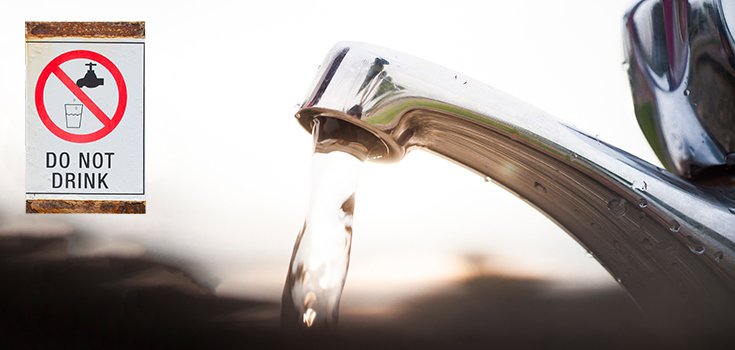Tap Water in Nearly 2,800 Chicago Homes Contaminated with Lead

A startling analysis in the Chicago Tribune shows that 70% of 2,797 homes across Chicago tested positive for toxic lead contamination within the past 2 years. Tap water in 3 of every 10 homes included in the analysis had lead concentrations above 5 parts per billion (ppb). [1]
The revelation comes about three years after high lead levels found in children sparked a state of emergency in Flint, Michigan. Tap water in the city was found to have outrageously high levels of lead, which had occurred as a result of the city switching to a different water source.
In the case of Flint, residents had complained for a year about the quality of their water, during which time Gov. Rick Snyder and other local officials denied there was a problem.
Dr. Philip Landrigan, dean for global health at the Icahn School of Medicine at Mount Sinai and an expert on environmental pollution in children, who was not involved in the Tribune’s analysis, said that his “immediate take” on the analysis was that “Chicago has a lead problem.” But he urged Chicagoans not to panic, saying the problem could be easily remedied by switching water sources, such as by drinking bottled water. [2]
Lead can wind up in tap water by leaching from certain kinds of pipes while the water travels from utilities to home faucets. No bodily system is safe from the ravages of lead, and children and pregnant women are especially susceptible to its effects.
Landrigan explained:
“Exposure is especially dangerous for young children and for pregnant women because the developing brain of a fetus in the womb or a young baby is very sensitive to lead, and even very low levels of lead exposure can cause brain injury in a child with loss of IQ and disruption of behavior. So people have to take this quite seriously.” [2]
And we’re not dealing with low levels here. The analysis found “alarming amounts” of lead in water samples taken from throughout the city, primarily because Chicago required that lead service lines be used between street mains and homes until the practice was banned by Congress in 1986. [1]

Takeaways from the Analysis
The analysis found that even after tap water had been running for five minutes, 9% of the homes tested had lead levels above the limits set by the FDA for bottled water. [2]
City and EPA officials said that residents could protect themselves by flushing household plumbing for three to five minutes when water hadn’t been used for several hours; but based on the analysis, flushing the plumbing might not be useful. [1]
Furthermore, “at more than 100 homes across the city where lead levels reached 15 ppb to 270 ppb in testing kit samples, water department officials conducted follow-up testing that involved drawing 10 consecutive 1-liter samples.” [1]
According to the Department of Water Management, “only 5.1% of kits had one or more samples with a lead concentration result greater or equal to the EPA Action Level of 15 ppb.” [2]
In homes where this was found to be the case, the department said it worked with those residents to verify the results, and inspected the home’s plumbing and wiring to try and determine where the contamination was coming from.
Calls for Help go Unanswered
The Tribune points out that even though Mayor Rahm Emanuel has borrowed over $481 million to overhaul the city’s public water system, the city is keeping lead service lines in the ground. [1]
The mayor’s office says that, under Chicago’s plumbing code, the onus is on homeowners, not the city, to decide whether it’s worth replacing the lead pipes at their own expense. Yet, it was this code that for nearly a century “mandated the use of lead pipes to convey water to single-family homes and small apartment buildings…” [1]
Critics argue that this essentially puts all city residents at risk, and the local government is missing an opportunity to fix multiple problems when crews dig up streets to replace aging water mains.
Tom Neltner, chemicals policy director at the nonprofit Environmental Defense Fund and former assistant commissioner of the Indiana Department of Environmental Management, said:
“Chicago could be a leader on nationwide solutions to this problem, but instead they appear to be sticking their heads in the sand.” [1]
The Chicago Department of Water Management’s response certainly seemed to come from a place of denial. In a statement, the department said:
“Since Mayor Rahm Emanual took office, he has made it a priority to improve Chicago’s overall water quality and infrastructure. Today, the city’s water exceeds the standards set by the (U.S. Environmental Protection Agency) for clean, safe drinking water. And the Department of Water Management continues to take a proactive approach to mitigating lead in our water system and is continually evaluating additional methods of lead mitigation.” [1]
Sources:
[1] Chicago Tribune
[2] CNN
